#Miandad
Video
youtube
Badar Ali Khan- Black Night
#youtube#badar ali khan#black night#badar miandad#lost in qawwali iii#badar miandad khan#qawwall#ghazal#indian rock#music#music is love#music is life#music is religion#rainingmusic#raining music
2 notes
·
View notes
Text
Irfan shuts down Sohail Khan for controversial 'Umran' jibe after Miandad's reminder Cricket
Veteran Pakistan fast bowler Sohail Khan has created quite a stir with his recent comments on Indian players. after he staggered”father-sonReveling in his spat with Virat Kohli in the 2015 ODI World Cup, Sohail has now taken a jibe at Umran Malik, who has become a sensation in India with his blistering pace and is on course to break Shoaib Akhtar’s bowling pace record. Though Sohail made a…
View On WordPress
0 notes
Text
"Fixing Iss Vajah Se Hui Thi": Javed Miandad's Huge Revelation On Pakistan Cricket
“Fixing Iss Vajah Se Hui Thi”: Javed Miandad’s Huge Revelation On Pakistan Cricket
Javed Miandad questioned the presence of foreign coaches in the Pakistan team.© Twitter
Pakistan lost to England by 5 wickets in the final match of the T20 World Cup 2022 on Sunday. While speaking after the game, former Pakistan skipper Javed Miandad questioned the presence of foreign coaches in the team. Miandad, who has also served as the coach of the Pakistan cricket team in the past, said…

View On WordPress
0 notes
Text
DC Muslim Superheroes
1. Simon Baz aka Green Lantern
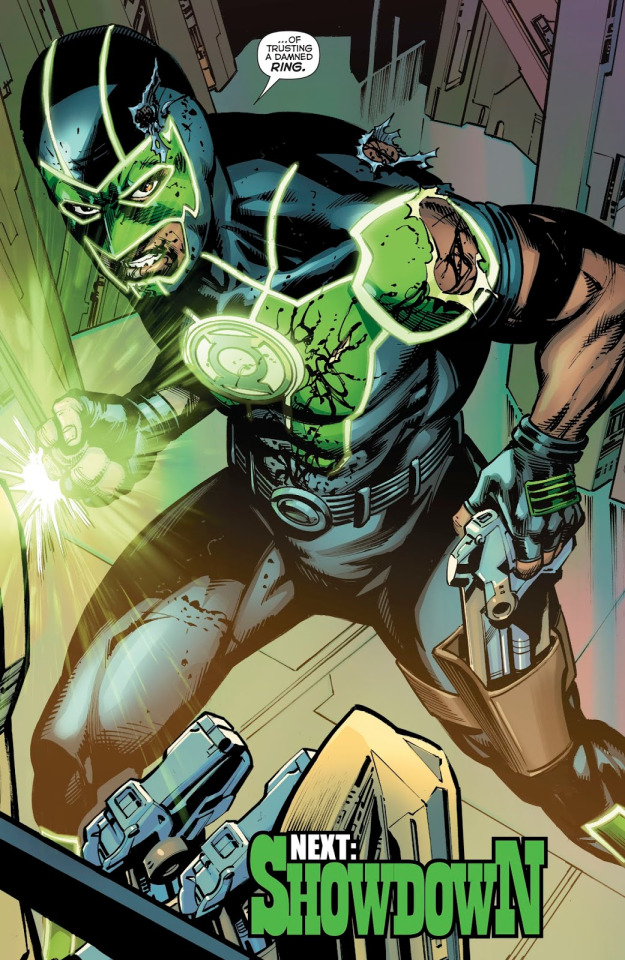
2. Ibis the Invincible
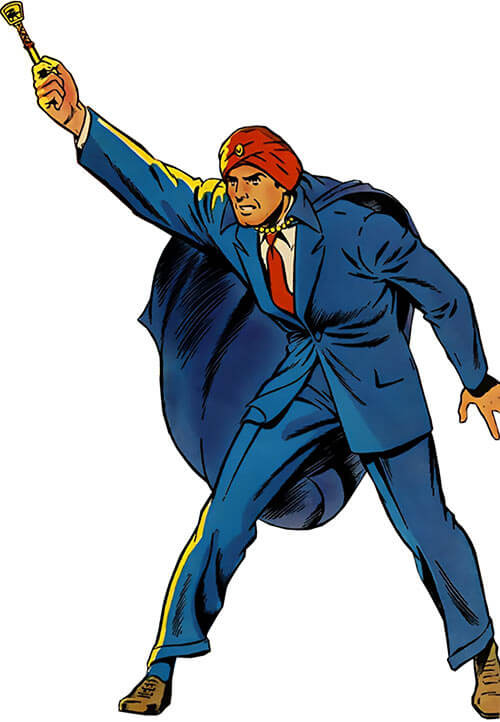
3. Kahina Eskandari aka Iron Butterfly

4. Kahina the Seer

5. Tiger aka Patron - real name unknown; an ally of Dick Grayson

6. Sirocco - full name unknown; an ally of Superman

7. Khalid Nassour aka Doctor Fate
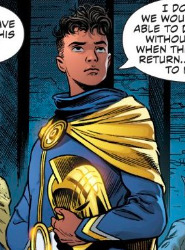
8. Bilal Asselah aka Nightrunner

9. Selma Tolon aka Janissary
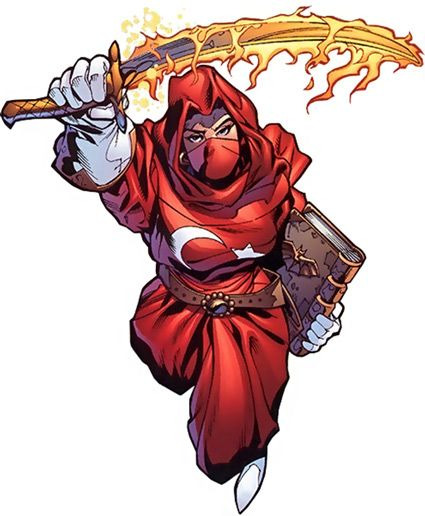
10. Munira Khairuddin aka Obscura - an ally of Barbara Gordon

11. Summer Zahid - from Teen Titans Academy

12. Rayhan Mazin

13. Sala Nisaba - Tunisian superhero

14. Shuja - real name unknown; ally of Magog

15. Sayeh - Kahina’s sister

16. Salah Miandad aka REMAC

17. Mohammed Qahtanii - from the Green Team
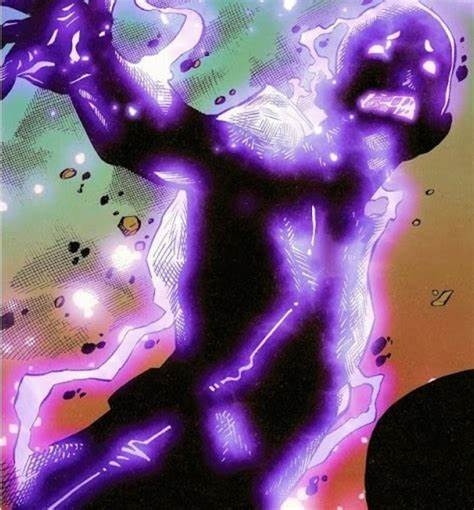
18. Sira Baz - Simon Baz’s sister

19. Hannibal White aka Wise Son

20. Muhammad X - real name unknown; ally of Superman; hero of Harlem
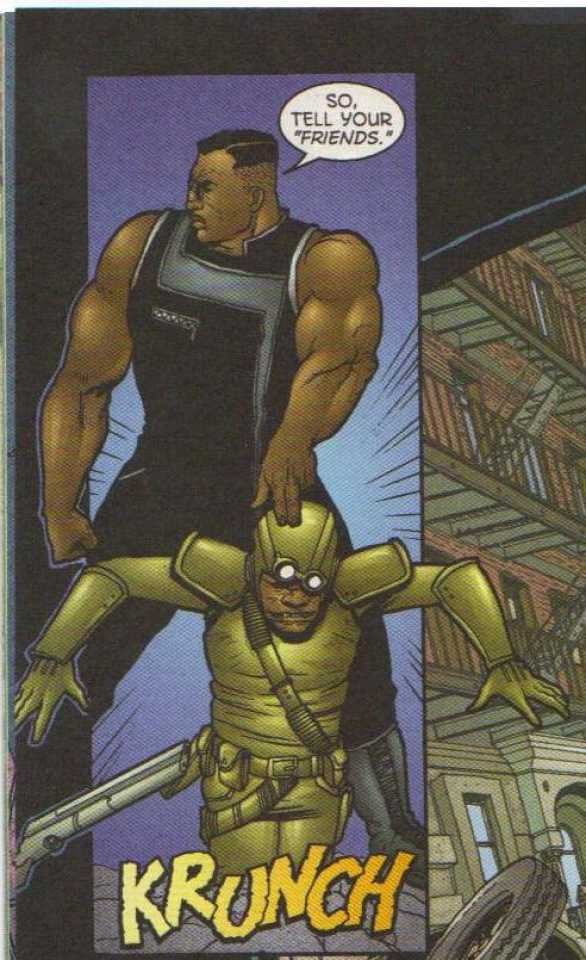
21. Davood Nassur aka Sinbad - ally of Superman
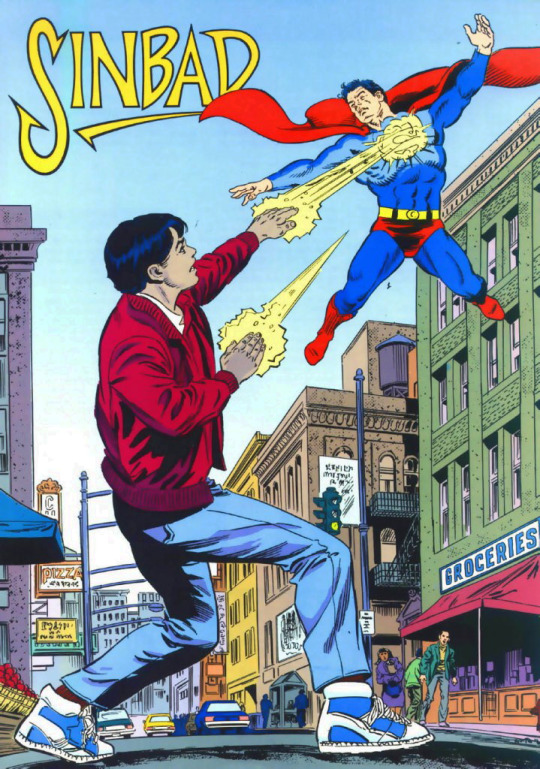
22. Akila - ally of Khalid Nassour’s Doctor Fate
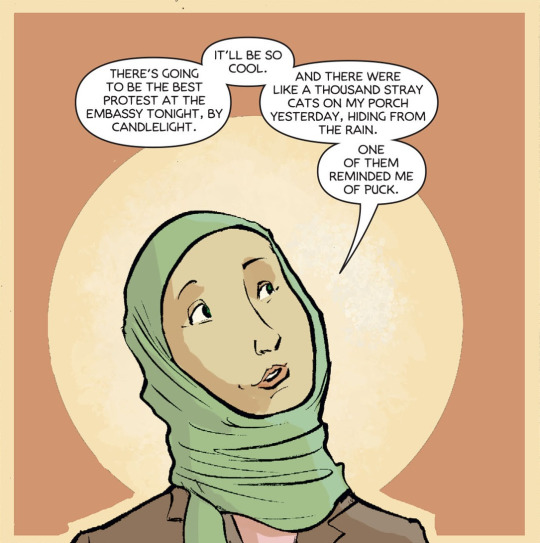
23. Nadimah Ali - ally/friend of Barbara Gordon

24. Qadir Ali - last name unknown; an ally/friend of Barbara Gordon

25. Shahara Hasan - from the Vertigo “Bodies” storyline

Please list any more if you don’t see any on the list. Be respectful with the comments.
6 notes
·
View notes
Text
Anyway (after summarising all the best bits of all the books) my feelings on Chuck Dixon are just so conflicted. Fortunately for me I am an adult who has gone through “the writer I really enjoy is a Terrible Person and in hindsight some of their views are really weird” enough times by now that I can allow myself to bring nuance to the situation.
Because, it’s Chuck Dixon! If you read 90s and early 2000s Bat comics you’re reading a LOT of Dixon. He wrote some of my favourite characters through my favourite eras for them, and he’s a continuity and crossover king. So, of course I like his material.
He wrote stories I am completely unreasonably in love with. Batgirl: Year One. Brotherhood of the Fist. Nightwing #6, #16, #25, #55-58. Birds of Prey #8. Hunt for Oracle. The three issues immediately after Joker Last Laugh in Robin #96, Nightwing #63 and BoP #32 where Tim and Ted Kord run around in the Bug tidying a lot of loose ends (escaped villains) up. Robin #34, where Tim spends the entire issue ducking Helena at a school Shakespeare in the Park trip. The bit of Legacy in ‘Tec #701 and Robin #33 where Dick, Babs, Helena and Tim team up to take out Talia Al Ghul and the boat of Internet (even as Bruce and Bane have a boring punchup elsewhere).
He’s also a conservative who’s gotten more and more reactionary in his old age and even back in peak mid 90s was writing heavy personal opinions into his work. Don’t do drugs, kids! Don’t have underage sex! You should definitely keep that pregnancy and give the kid up for adoption! Almost all my gang kids are Black! (Also. So many funerals. I cannot spell out how many funerals of kids Tim went to in his run of Robin. Kids got punished by the narrative a lot. We TALK a lot about the Identity Crisis-War Games conflict that had Tim go to Jack Drake, Stephanie Brown and Darla Aquista’s funerals on three consecutive days, but go back to Dixon’s Robin and he’s dealing with another dead classmate ever 10 issues or so for a while there)
But given I’ve just done a strict in order read through from 1989 onwards and I’m up to 2009, it’s notable how much more I started sighing every time I saw Dixon listed as a writer on an issue after 2003 and the end of the Dixon domination era. Some of his stuff after this is still fun but it starts to stand out more as weird when not every second issue I’m reading is written by Dixon. (Have to say though, parts of his 2007 Batman and the Outsiders run were hugely entertaining, even as I side-eyed quite a bit of the characterisation. Well. The parts that involved Francine Langstrom, Salah Miandad, Rex, and the bit with Cass and Tatsu together, generally, were entertaining).
So yeah. Not to stan a guy who in the present day is tied up with Vox fucking Day et al, but wow did a lot of conservatives lose their minds and become a LOT worse as general society trends moved further out of their viewpoint. And Dixon is definitely in that category.
I’d need a very solid reason to pick up anything Dixon has written in the past 10 years (and ‘Robin 80th Anniversary issue’ does count for ‘solid reason’), but he’s 100% worth reading back in his prime Bat days, as long as you’re aware of his little hobbyhorses and ready to roll your eyes when the writer on board opinion gets too obvious. There’s a reason he was writing so much material back then, and it’s not just because he was a reliable writer who could turn around a script on the correct date.
(But also it’s perfectly ok if you never ever let him write another comic, DC, we are all JUST FINE with that)
12 notes
·
View notes
Text
Amjad Sabri: Top 20 Best Pakistani Qawwali Music Download
In this useful article I guide you about Amjad Sabri, a Pakistani Qawwali Music Artist, Qawwali is a kind of Sufi Islamic reverential music ranging from the Indian subcontinent.
It's eminently mainstream within the Punjab and Sindh districts of Pakistan; in Hyderabad, Delhi, and other items of India, in particular North India; simply as within the Dhaka and Chittagong Divisions of Bangladesh.
Qawwali Music Artist Amjad Sabri was carried out at Sufi sanctums or Dargahs all over South Asia, it picked up the usual ubiquity and a world crowd within the past due 20th century.
Qawwali music was given a common advent through past-due Pakistani artists Aziz Mian Qawwal, Nusrat Fateh Ali Khan, and the Sabri Brothers.
An excellent extent on account of a couple of releases at the Actual Global title, trailed through reside appearances at WOMAD celebrations.
Amjad Sabri Best Pakistani Qawwali Music Download
Amjad Sabri Biography Famous Pakistani Qawwali Music Artist
1. Amjad Sabri was born on 23 December 1976 in Karachi Pakistan. His unique title used to be Amjad Farid Sabri Qawwal and he is the best Qawwali Artist of Pakistan.
2. Amjad Sabri began taking in Qawwali Music from his father at age 09 and joined his father in the entrance of a target audience to accomplish in 1988 when he was 12 years old.
3. His father readies him in "Raag Bhairon", drilled in the early morning. For this preparation, Sabri had to rise in the dark, at that time within the wake of appearing Tahajjud and rehearsing the Baja.
4. Amjad Sabri's closing musical challenge used to be with Coke Studio. He carried out an excellent Qawwali, "Aaj Rang Hai" with Rahat Fateh Ali Khan.
5. Amjad used to recount melodies and applaud in his father and uncle's Sabri Brothers. He likewise confirmed with his father Ghulam Farid Sabri and uncle Maqbool Ahmed Sabri.
6. Amjad Sabri started his career when he was 06 years old years along with the Sabri Brothers in the Pakistani "Movie Sahara" in 1982.
7. His father and uncle offered their acclaimed good hit “Tajdare-e-Haram", he moreover mentioned Allama Muhammad Iqbal's sonnet “Lab Pe Aati Hai Dua”.
8. Later on, in 1996 Amjad Sabri started his collecting along with his siblings and partners as people. His first assortment was “Balaghal Ola Be Kamalehi”.
9. This Qawwali was launched through Oriental Megastar workplaces in 1997 and highlighted his father and uncle's good hit “Sar-e-La, Makan Se Talab Huwi” as the principal factor.
10. This great Pakistani Qawwali Music Artist died of target killing in Karachi Pakistan on 22 June 2016, and his best Qawwali Music is still remembered for all time.
What's Qawwali Music and how Amjad Sabri Performed it?
1. Amjad Sabri and other well-liked Qawwali Maestro incorporate Pakistan's Fareed Ayyaz and Abu Muhammad, Rahat Fateh Ali Khan, Badar Miandad, Rizwan, and Moazzam Duo.
2. Most modern-day Qawwali artists together with Ustad Nusrat Fateh Ali Khan Fareed Ayyaz and Abu Muhammad have a spot within the famed "Qawwal Bachon ka Gharana" College of Qawwali.
3. A meeting of Qawwali Music performers known as a meeting (or Humnawa in Urdu), most often contains 8 or 9 males together with a lead artist, a few aspect vocalists, and a few harmoniums.
4. At the off likelihood that there's only an unmarried percussionist, he performs the tabla and Dholak, for essentially most sections, the tabla with the present hand and the Dholak.
Views and Ideas About Qawwali Music?
1. Qawwali Music is in most cases someplace within the vary of 15 and a half hours in duration. After all, the longest economically launched Sufi Music Legend Qawwali Music run was rather greater than 115 minutes.
2. They begin with an instrumental preface the place where the principal music is performed at the harmonium, joined through the Tabla, and which would possibly incorporate ad-libbed forms of the music.
3. At that time comes the alap, a protracted tonal ad-libbed music all over which the vocalists articulate various lengthy notes, within the raga of the melody to be performed.
4. The lead vocalist begins to sing some prelude sections that are ordinarily no longer a part of the primary track, albeit in particular recognized with it.
5. After the lead artist sings a piece, probably most aspect vocalists will rehash the chorus, perhaps along with his spontaneous introduction. A few large stanzas will probably be sung presently, into the basic melody.
6. As the principal music begins, the Tabla, Dholak, and applauding get started. All people take part in making a song of the stanzas that contain the holdback.
7. The verses of the principle sections are hardly ever ad-libbed; in fact, those are incessantly typical songs sung through a large number of gatherings.
8. In particular inside of an equivalent ancestry. Be that as it is, the songs are unobtrusively ad-libbed within the construction of the primary music.
9. Because the melody continues, the lead artist or probably the most aspect vocalists would possibly escape into an alap. Nusrat Fateh Ali Khan moreover promoted the contribution of Sargam making a song.
10. The melody, most of the time, works in beat and effort, with each artist attempting to exceed the opposite so far as vocal trapeze artistry.
11. A couple of vocalists would possibly do in-depth stretches of Sargam's impromptu introduction, in particular substituting acts of spontaneity with an understudy artist. The songs normally finish out of nowhere.
Amjad Sabri Qawwal's The Rise to Fame
1. Amjad Sabri's rise to fame was marked by numerous accolades and milestones. He collaborated with renowned musicians and artists, both within Pakistan and internationally, and his performances were highly sought after.
2. His rendition of "Bhar Do Jholi Meri" from the Bollywood movie "Bajrangi Bhaijaan" became a massive hit and further elevated his status as a qawwali icon.
3. What set Amjad Sabri apart was not just his exceptional vocal abilities, but also his unwavering devotion and spirituality.
4. His performances were not mere musical recitals; they were deeply spiritual experiences that touched the hearts and souls of his listeners.
Conclusion
Amjad Sabri's life was a testament to the power of music to touch the deepest corners of our souls. Through his qawwali performances, he not only entertained but also uplifted and inspired millions.
His unique style and unmatched talent have solidified his position as one of the greatest qawwali artists of all time like Sabri Brothers Qawwali.
Though Amjad Sabri may no longer be with us, his music and his spirit continue to live on. His legacy serves as a reminder of the transformative power of qawwali and the enduring impact of a true musical genius.
Read the full article
0 notes
Text
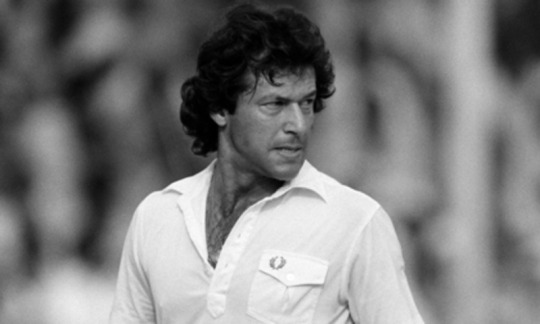
IMRAN KHAN AS 'KAPTAAN'
The decision to make Imran Khan the captain of the Pakistan cricket team in 1982 took a lot of people by surprise.
Known more as a flamboyant fast-bowler/bowling all-rounder and ‘playboy,’ nobody quite expected him to ever lead the national cricket team. Not even Imran himself.
When Javed Miandad was ousted by a players’ rebellion, he was expected to be replaced by either Zaheer Abbas or Majid Khan.
But since Majid and Zaheer were the central figures in the rebellion against him, Miandad (after resigning from the captaincy), made it clear to the cricket board that he was not willing to play under either of the two aspirants.
The board came up with a compromise candidate in the shape of Imran Khan. Khan was reluctant. His close friends warned him that captaincy would destroy his career and form.
Nevertheless, after some thought, Khan accepted. Quite the opposite happened to his career and form. Not only did he win 7 of the first 12 Tests that he captained, his form as all-rounder also reached a peak.
With his performances he was able to quickly gain the respect of his teammates and successfully weave a fragmented side into a tightly-knit unit. However, in 1983 he suffered a career-threatening stress fracture in one of his shins that prevented him from bowling.
He tried to hang on as a batsman and captain, but couldn’t help arrest the team’s sudden decline. He finally decided to take a break from the game and heal his fracture.
When he returned to the team in 1985, Miandad was once again the captain but he voluntarily handed over the captaincy to Khan.
Khan’s second stint as skipper was equally successful but at the same time a lot more controversial.
After reestablishing himself in the team as its premier all-rounder and captain, Khan began to exercise an almost dictatorial hold over the team and regularly clashed with the selectors and members of the board.
He claimed that since it was the captain’s head that lands on the chopping block when the team does not do well, the captain should have the most say in selecting the team.

Khan would often throw away and reject touring squads selected by the selectors, and refuse to play if his recommendations were not entertained in selection matters. This attitude bore both fruit and frustration.
For example, he fought hard with the board to get in players like Abdul Qadir (who would go on to become a world-class spinner). He also dotingly nurtured fast men like Wasim Akram, Waqar Younis and Aaqib Javed who went on to lead a fast-bowling revolution in Pakistan in the 1990s.
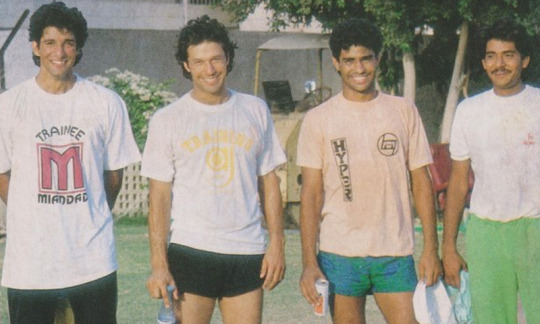
The board could not do much about Khan’s tantrums as long as he had the backing of the team, was performing well as a player, and producing unprecedented victories.
For example, it was under Imran that the team notched its first ever Test series wins against England (in England) and against India (in India) – both in 1987.
No player, except his vice-captain, Javed Miandad, dared disagree with him, and the selectors and board officials mostly did what he told them to.
He would also often exhibit his anger on the field at players he thought weren’t giving their all, and the spectacle of Khan admonishing players with some choice Urdu and English abuses became a common sight.


No wonder then that one of Khan’s heroes was former Australian captain, Ian Chappell. Like Chappell, Khan regularly applied tactics involving mind games.
For example, when he managed to bring back Abdul Qadir from oblivion for the team’s 1982 tour of England, he told the British press that there has never been a trickier leg-spinner than Qadir. He then asked Qadir to grow a ‘wizard’s goatee’ so he would look like a mysterious magician.
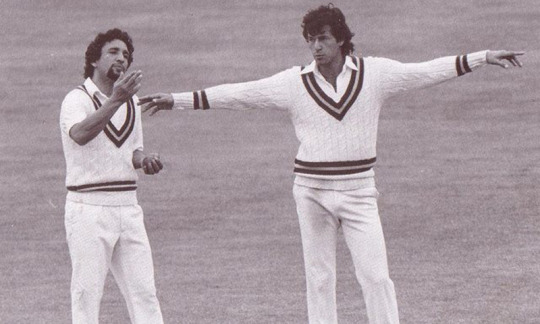
During an ODI tournament in Australia in 1986, Khan advertised all-rounder, Manzoor Elahi, as being ‘perhaps the hardest hitter of the cricket ball in the world.’ Of course, he wasn’t.
In 1989, while playing an international ODI tournament in India (that Pakistan won), Khan (to distract the Indian team), told the press that the issue of Kashmir should be resolved and settled (between India and Pakistan), on the cricket field!


Players found him to be uncompromising and stern on the field, but also remember his captaincy to be a ‘very fun period’ in their careers.
Khan finally wrapped up his career by leading Pakistan to win the 1992 World Cup in which his vice-captain, Javed Miandad, and he played pivotal roles.
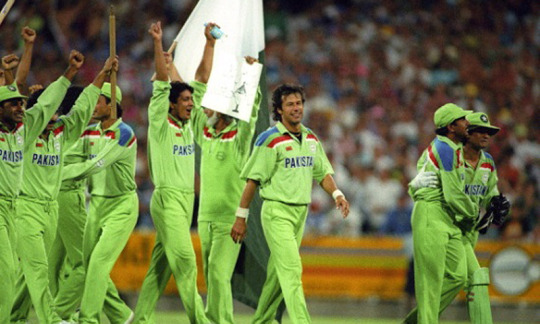
Imran retired immediately after the World Cup, aged 41.
Captaincy Record (1982-84/1986-88/1989-92):
Tests: 14 won, 8 lost, 26 drawn.
ODIs: 75 won, 59 lost, 1 tied, 4 no result.
0 notes
Text
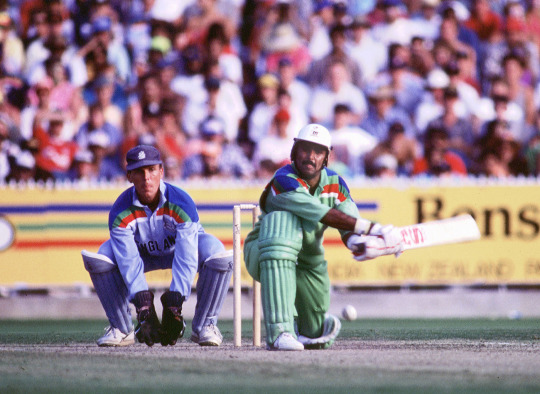
Classic Karachi-Nous: Legend Mohammad Javed Miandad in the 1992 Cricket World Cup Final against England, Melbourne Cricket Ground, Melbourne, Australia. March 25, 1992. Photograph David Munden/© Getty Images
The Jugaaroo! Cheeky, Tough and Masters of Improvisation: How Does Karachi Produce The Batsmen It Does?
Cricketers, like the rest of us, are often perceived to be products of the places they grew up in. Mumbai has a reputation for producing khadoos players, while Hyderabad is popularly regarded as being a nursery for wristy artists, Yorkshire's are dour, while Melbourne's won't give you an inch. Karachi, meanwhile, is said to breed all of these traits into its cricketers: they are inventive, competitive, combative, relishing times when their backs are to the wall, and always looking to grab the game by the scruff of its neck.
— Ahmer Naqvi | Published: June 2, 2016
On March 7, 2015, Pakistan met South Africa in a must-win match at the World Cup. They decided to open with Sarfraz Ahmed. Until then in the tournament, Sarfraz had sat warming the bench - to much criticism - as Pakistan chose to play Umar Akmal as a makeshift wicketkeeper in a bid to bolster the batting. The management had little faith in Sarfraz's batting, especially as an opener, though he had had previous success in the position. Here he was sent to open against the best bowling attack the team had faced so far.
He was beaten inside the line by Dale Steyn the very first ball he faced. "The way I was beaten, it gave me an idea," Sarfraz told me when we met in Karachi a few weeks after the World Cup. "Unless I move forward to meet [the next ball], this gig is going to be up, as the pitch was difficult and the conditions were overcast. So I understood that even if he bowls a sharp bouncer, I could be proactive, as I was ready for him."
Sarfraz started batting out of his crease, shuffling, shifting and sliding effortlessly across it, and eventually scored an entertaining 49. That helped Pakistan to their most authoritative start in the tournament against a major side.
For the casual observer, Sarfraz's daring improv style bore some resemblance to the exciting new strain of batting that livened up the tournament; for this Pakistan side it was an anomaly. Like transistor radios in the age of the internet, this team was composed of batsmen suited to an earlier, forgotten era of cricket. In that light, Sarfraz's innings prolonged the lineage of a distinct strain of Pakistani cricketers.
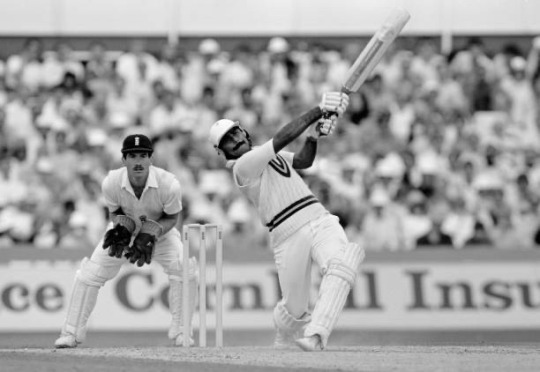
This type of batsman isn't unique to Pakistan, but the Pakistanis who fit it are most likely to be from Karachi. Think of Moin Khan and, to some extent, Rashid Latif. Before them, Asif Mujtaba, and well before them Mushtaq Mohammad and Asif Iqbal, and between them the man who fleshed out the prototype himself, Javed Miandad.
What they had in common was a non-traditional, lateral approach to finding solutions. They looked to generate new ideas. The question was whether this capacity was in some way linked to the city they all hailed from - was there something about growing up in Karachi that conditioned their response? Perhaps this was romanticism - trying to find a reflection of the city I was born in within the game that I loved. But it seemed relevant that when one thought of, for example, the reverse sweep, the advent of proactive running, or counterintuitive strategies, there was always a someone from Karachi involved.
A List of the World's Largest Cities includes several Test centres in the subcontinent. Some, like Lahore and Delhi, are ancient cities with long and grand histories. Some, like Mumbai or Kolkata, are products of colonialism but with a contiguous link to their older pasts.
Cricket's great cities absorb young players and rationalise their approaches. If there is anything unique about Karachi, it is that its tumult has thrown up these players
From having been essentially a fishing village, Karachi was completely transformed by the end of colonialism. So much so that Imran Aslam, a renowned journalist and Karachi resident, says of it: "[It is] a city by the sea [which] has no sea culture, because the entire population here is either Ganga Jamni [from the Gangetic plains of northern India] or from the mountains. You don't get lobsters here, nobody really eats seafood, and you don't see any sailors. It's a city which has no dwellers of its own anymore."
The birth of Pakistan turned Karachi not only into the new capital but also the destination of millions of refugees and migrants, who arrived as much for ideology as for survival. The states of northern India were home to many of the Muslim elites who led the movements for the creation of Pakistan. As such, Karachi was seen as the crystallisation of an idea. The explosiveness of the city's growth soon outstripped the state's ability to realise this idea, and in the decades since, endemic violence has crippled it further.
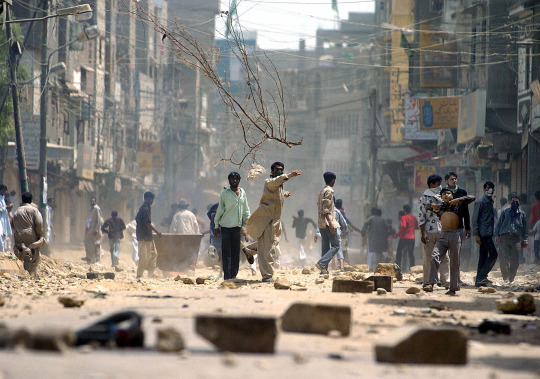
Pakistan's financial hub has withstood decades of civil unrest and tension © Getty Images
Yet it has remained the country's industrial and financial hub as well as its major port. In his book on Karachi, the French author Laurent Gayer describes the city's tense, contradictory equilibrium as an "ordered disorder", and hits at the larger question of Karachi: "How has this city subjected to violent escalation and polarisation… avoided a fully-fledged explosion?" Gayer asks this in the context of the last three decades, when the pervasive levels of violence truly began, but as his book makes clear, the idea of the ordered disorder took root in the city's post-partition development.
Karachi has always been the most consistently tumultuous city in the country. Over time it has given rise to a specific response from its citizens: "rather than coping with crisis," Gayer writes, "they have learned to cope in crisis". Survival instincts are honed that much sharper here.
It manifests itself in a couple of ways. One, as Moin Khan put it to me, is an inner competitiveness. "You are even told at home about the need for healthy competition, and it's very important - if you don't make someone your competitor, then who are you competing with?"
It also brings an urgency and practicality to all tasks, as Rashid Latif illustrated to me through an example of two salesmen. "I take a salesman [outside Karachi] and I tell him, go and do this thing and come back. On his way he will go home and his amma will tell him that she has given the daughter's dupatta to the dyers, so could he please pick it up on his way, but when he gets there the dyer says he'll have it by the evening. So now the salesman figures he is hungry and gets something to eat and it will be evening before he returns to you. In Karachi, you tell him, 'Go do this' and he will go, get it done and come back."
That was not apparent in the cricket immediately. For the first few decades after 1947, Karachi's main source of quality cricketers was its elite, colonial-era schools. They had access to the best facilities and established traditions, and played eagerly contested tournaments. The schoolboy cricketer, particularly one born to Muhajir (or immigrant, to describe those who moved to Pakistan during and after partition) families looking to establish themselves in a new land, was cast with certain expectations and incumbent responsibilities.
Over time Karachi has given rise to a specific response from its citizens: rather than coping with crisis, they have learned to cope in crisis
The consummate product of the school circuit was Hanif Mohammad, and until the 1970s he represented the ultimate ideal of a Karachi batsman. His 337 in Barbados was testament to a young, determined force that refused to give in. Little wonder then that the country, and particularly those sharing his recent migrant past, saw so much of themselves in that effort. It was an innings defined by grit, as the sunburnt layers of skin on his face from 16 hours at the crease testified.

Toughened in Karachi: Mushtaq Mohammad, batting during the 1978-79 Test series against India, was known for his innovative strokeplay and back-to-the-wall performances Patrick Eagar/© Getty Images
However, things would begin to change for both the city and its cricket. Faced with a constantly restive population that defied the state's directives, Ayub Khan, Pakistan's first military dictator, decided in 1960 to move the capital from Karachi. The city continued to attract economic migrants from across the country, becoming simultaneously wealthier but also more unruly. Its centre gyrated to foreign bands and discos and bars, while its peripheries grew rapidly and informally, with the state too overwhelmed to keep up. It was inevitable that cricket would change, and by the '70s the conditions were in place for a new type of batsman to emerge.
Tariq Alam had just completed his matriculation exams in the early '70s when Pakistan's domestic cricket began to induct department sides, such as those of banks, in their first-class set-up. Alam's club had organised a match against a department side where they were set 270-odd to chase and had lost three or four wickets. Keeping with his burgeoning reputation on the local circuit, he walked out and scored a hundred, leading his team to victory. His innings impressed the opponent's sports in-charge, who offered him a spot in the side and a job at the company. Alam was dazed by the offer.
"I was in matric then and I didn't know anything about anything. I just looked at him and said, 'What are you saying?'" he told me in Karachi late last year.
Some seasoned pros urged him to say yes, and Alam headed home to tell his mother and older brother. He remembers being frightened by the turn of events, but his similarly surprised elders quickly realised that he had been offered a job before he had even got to college, and they decided this was the best way forward.
What it meant was that boys from middle-class families could pursue cricket as a serious profession. It meant that playing for clubs could land you a stable job, and in a city driven by the need to survive, it suddenly gave cricket legitimacy in the eyes of a new class of people.
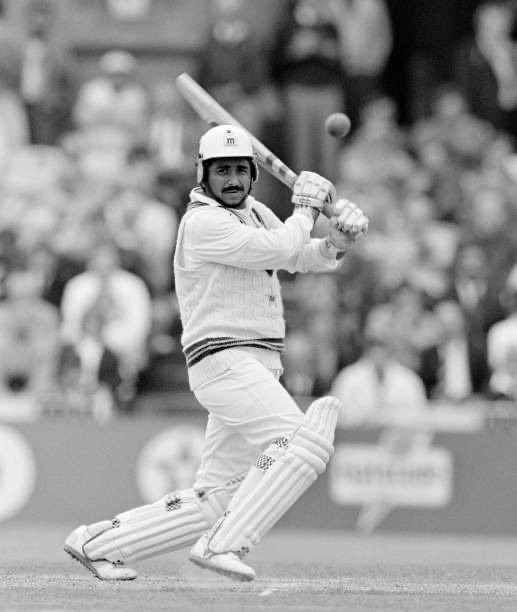
Javed Miandad
While these changes were sweeping through the domestic game, the national team was also changing in decisive ways - both in terms of how it played and how much it was paid. Led by Mushtaq Mohammad, Hanif's younger brother, a new generation of cricketers emerged. They played extensively on the English county circuit, and were attuned to a professional approach to the game and to the competitiveness that came with it. Mushtaq captained a team that provided the template for the modern, unquiet brand of Pakistani cricket - confident, explosive and mercurial.
The apogee of this reinvigoration came, fittingly, in Karachi and against India in 1978. The Indian captain, Bishan Singh Bedi, had already watched Pakistan romp to an improbable win chasing at six an over in the final session of the previous Test, in Lahore. In Karachi the target was stiffer. Pakistan needed 164 to win in 100 minutes, and Bedi was taking few chances, banishing almost his entire field to the boundary. The tactic did not faze Imran Khan, who kept going for, and pulling off, big hits near the end. But what made that chase memorable was how two batsmen chose not to defy Bedi's tactics but to use them against him.
Promoted by Mushtaq, Asif Iqbal and Miandad put on 97 in nine overs, and they did so by tapping the ball instead of blasting it, and running with an aggression unknown to cricket then. Both batsmen were capable of hitting boundaries, but the decision to go for the smarter choice lit up the imaginations of those watching. A small clip online captures their impish assault, in which they pinched doubles and stole byes off dazed fielders. It was, as Zaheer Abbas would later observe, "one-day running but ahead of its time".
Javed Miandad
Miandad's exploits, demeanour and intelligence captured all the qualities that we seemed to identify with the city
But that particular style of batting had already taken root in Karachi's club circuit. Alam, father of Pakistan international Fawad, made quite a name for himself on the club scene - crowds of thousands are said to have flocked to watch club matches in the '70s, and he was often one of the main attractions. An increase in the number of matches exposed players to all sorts of situations, with limited time often requiring a new batting approach.
A certain kind of batsman came to be lionised, one now recognised as a prototype of the ODI finisher. "My batting position, in the middle order, is one where when you arrive at the crease the match situation has become apparent," Alam told me. "From there you have to make sure that you complete your turn at the crease. I only regard someone as a batsman [if he] can take the match with him and return having finished it. If you make 30-40 and get out, then those runs are useless for the team."
The obvious subtext to this approach was a desire for heroism, but one that only took place as a subset of the team's glory - Alam dismissed those batsmen who play for the "Wah wah" of a few dashing strokes. What was crucial was the ability to take the situation by the scruff of the neck and drag the team to its finish. In Urdu, Alam said "match ko pakar ke chalna", or, to grab hold of the game and go along with it. It was an especially resonant phrase.
For example, Moin, whom I met in the sprawling office of his eponymous cricket academy, used a similar phrase to define great batsmen. "Whenever you looked at the great batsmen of the past, it would seem that game ko chala rahe hain khud [they are running the game by themselves], and everything else would be a function of them."
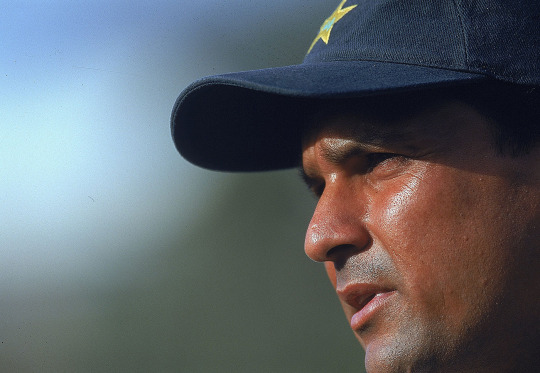
Moin Khan: "You are even told at home about the need for healthy competition - if you don't make someone your competitor, then who are you competing with?" © Getty Images
For modern fans, venerating finishers isn't out of the ordinary. But where nowadays those runs are scored increasingly in boundaries, this type of batsman would use subtler, less bludgeoning methods. Not that there is less risk in this approach. Risk-taking, as Moin explained, is intrinsic to the Karachi approach. "One who doesn't take a risk is caught between two stools. You have to take a risk for your own success. And when you do take a risk, then your approach is always positive."
It is what he did with his running between the wickets, when he felt he had to keep the other team on their toes. "There's a chance in that - sometimes you can make the error, sometimes the fielder will. But until you put pressure on the fielder he won't fumble… and if you're waiting that if he fumbles then only I'll run - no! You have to make him fumble. You know how they say, 'Make it happen'? You have to play with the other's mind."
Jugaar Is A popular Urdu And Hindi Word That Wikipedia Defines As An "Innovative Fix or A Simple Work-Around". A person employing such methods is often referred to as a jugaaroo, which when you think about it really means someone who is good at lateral thinking or at finding solutions that circumvent traditional logic and norms. The rationale behind this piece was that Karachi had a rich tradition of the jugaaroo batsman.
Like transistor radios in the age of the internet, Pakistan's team of 2015 was composed of batsmen suited to an earlier, forgotten era of cricket
The cricketers I spoke to focused very little on the jugaar aspect of batting - they were keen to speak instead about the meaning or purpose of batting rather than the process of it. But the meaning they ascribed to batting also gave away its connection with the approach: they saw themselves as the little guy, the outsider who lacked the privileges that came to others; forever the little guy punching above his weight, goading the opposition and pretending he can bully the bullies, right till he is actually doing so.

Javed Miandad against India
Imran Aslam had a wonderful quip that perfectly unlocks why the country's largest, richest city would see itself as the little guy or the outsider. Describing the politics - both of cricket and the nation - in Pakistan's two power centres, he says: "When you go to Lahore, they say to you, 'Listen, there's a conspiracy going on against me. You just see, there's a lot of politics going on.' In Karachi, the first conversation is always about injustice."
The word ziyaati - injustice - came up, unprompted, in just about every interview, and it reflects the view that those based in Karachi are outside the system, one that will always seek to attack and marginalise them. The ideal response, then, is to fight back using one's own basic resources, and rely on ideas that exist outside of the norms - in essence, the definition of jugaar.
The longer I spent thinking about this, the more it seemed like Miandad represented the canonical version of the Karachi approach to batting. His exploits, demeanour and intelligence captured all the qualities that we seemed to identify with the city. As Rob Smyth once wrote of him:
"In a sense, all batsmen are doomed. They walk to the crease knowing that their innings is finite, and that it could end at any moment. It takes a very special person to relish that situation, but that's how Javed Miandad played. He had the mentality of a fugitive, content to live on his wits no matter how great the risks. In fact, he needed those risks in order to thrive. The anarchy stimulated him."
(As such, there are certain Karachiites who take a perverse pleasure in riding the city's constant rush of adrenaline. Some friends of mine lived near MA Jinnah Road, one of the city's most symbolic avenues, home to many protests that frequently descend into riots. Describing their hobby as "mob management", they would often look to lead and direct those setting tyres on fire, breaking windows and stoning passing cars. The trick, and the thrill, was to escape before someone realised and the violence was directed at the mob managers.)
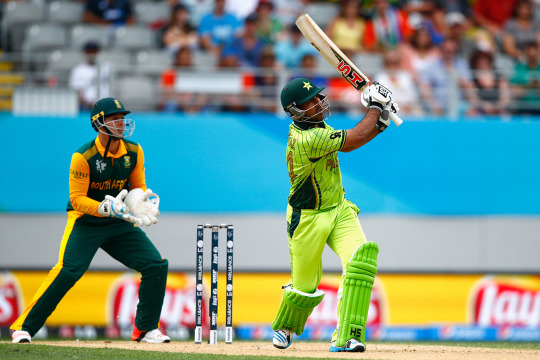
In the modern era, Sarfraz Ahmed's batting has most closely epitomised the Karachi way, as during his 49 against South Africa in Auckland in 2015 © Getty Images
Yet Miandad also transcended this category because he was far too good a batsman, too blessed with skill and ability to be truly considered just a jugaaroo. By design, this approach comes to those who are not as gifted and must find other ways. Think of the innovation that came naturally to Mushtaq, who lacked at least the technique of Hanif. Rather than be daunted, he was creative, experimenting with pinch-hitters like Imran or sending Iqbal to open, and most of all with the reverse sweep, which he lays claim to having invented. That had come in a club game in England in 1964. The problem was Fred Titmus bowling on middle and leg with a midwicket and square leg in place; Mushtaq's solution was to reverse sweep through the vacant point- and third-man region.
Mushtaq had several classic back-to-the-wall performances in his career. A similar sense of crisis inspired Iqbal as well, who was never seen as a top-order batsman and yet was consistently reliable when it was toughest to bat. Osman Samiuddin calculates in The Unquiet Ones that 18 of Iqbal's 23 scores of 50-plus came "with Pakistan in deep strife".
You glimpse it in others from the city too; in Asif Mujtaba's two impossible ODI chases against Australia, sealing a win and a tie with a last-ball six; in Moin's audacious sweeping of Glenn McGrath, a shot he admitted he never dared practise against his own bowlers in the nets; in Sarfraz's heist in Sharjah.
None of this is to claim that such players are unique to Karachi, but it is often true that in a sport as traditionalist as cricket, such players often emerge from the hinterlands, from far-flung areas with self-taught techniques. Cricket's great cities on the other hand soon absorb young players into the sport's institutions, rationalising their approaches. If there is anything unique about Karachi, it is that its tumult and sway have created a propensity for throwing up these players.

It is difficult to see what the future holds for this sort of player. The opportunities of tape-ball cricket, the city's great love and invention, as well as the techniques it imparts, have affected the ability of local batsmen to adjust to regular hard-ball cricket. One of the links between Rashid's and Moin's era and that of Sarfraz is Shahid Afridi, whose influence on local batting ideals cannot be discounted. More significantly, batting all over the world has undergone a significant evolution, one that Pakistan has missed out on. International cricket is now gone, a further impact on the exposure afforded to local players. Then again, those are exactly the kind of odds against which Karachi batting might thrive.
— Ahmer Naqvi is a Freelance Writer who works for the Music Website Patari. He would like to acknowledge Safieh Shah's help in writing this piece.
— The Cricket Monthly
0 notes
Link
Shaheen Afridi should have been given less time as captain: Javed Miandad Former Pakistan cricket - ...
0 notes
Photo

Young Sufi Poets Rubaiyat Niranjan Sant Nirguni Poets Punjabi Sufi Poets Hindustani Sufi Poets Persian Sufi Poets Suggested Sant Poets Suggested Sufi Poets All E-Book: Bulleh Shah Videos (164): Abida Parveen Sher Miandad Khan Jagmohan Kaur Nusrat Fateh Ali Khan Sain Zahoor Ahmad Others Profiles: Bulleh Shah Hindustani Adab Ke Memar (1992) Kalaam (Poetry): Ranjha Ranjha Hori Khelungi Haji Lok Makke Nun Jaande Mainu Ishq Hulare Denda Raatin Jagen Karen Ibaadat Doha (Couplets): Muñh Dikhlāve Aur Chhupe Chhal-Bal Hai Jagdīs Paas Rahe Har Na Mile Is Ko Bisve Biis Us Da Mukh Ek Jot Hai, Ghunghat Hai Sansar Ghunghat Mein Oh Chupp Gaya, Mukh Par Aanchal Daar Un Ko Mukh Dikhlāye Hain, Jin Se Us Ki Preet Na Khuda Masite Labhda, Na Khuda Wich Ka'abe Bulle Shah, Aunda Sajan Vekh Ke, Jaanda Mool Na Vekh Shabad (Sikh Hymns): Ik Nukte Vich Gall Mukdi Hai Bansi Kahan Achraj Bajaii Ishq Di Naviyo Naveen Bahaar Muñh Aai Baat Na Rehendi Hai Main Kyon Kar Javan Ka'abe Nu, Dil Loche Takhat Hazaare Nu Dohra (Couplets): Rabb Rabb Karde Budhe Ho Gaye Mullan Pandit Sare Panje Waqt Namazan Padhiyan Te Tainu Lok Aakhan Namazi Na Khuda Masite Labhda, Na Khuda Wich Ka'abe Na Khuda Qur'an Kitaaba, Na Khuda Nimāze Athvara (Prayer): Athvara Barahmasa (Poetry): Barahmasa Books: Bulleh Shah Hindustani Adab Ke Memar (1992) Sufi Quotes (23) Holi (1) Related Sufi Poets: Bedil Azimabadi Related Content: Blog Discover: Sufi Quotes Holi Related Sufi Poets
1 note
·
View note
Text
0 notes
Text
#Javed Miandad Gives Proof That 'Sambdhi' Dawood Ibrahim Is Alive, Says, It Is An Honour That Underworld Don's Son Married His Daughter | Cricket News #TATAIPL #IPL24
#IPL24 #
Former Pakistani batter Javed Miandad made another controversial statement in an interview given to a Pakistani journalist when he praised his relative and Underword Don Dawood Ibrahim for doing ‘a lot’ for the Muslims. Miandad, as big a controversial figure in Pakistan as batter, said that understanding the real Dawood is not easy and the family is not what many perceive outside.…

View On WordPress
0 notes
Link
Eski Pakistan kriket kaptanı Javed Miandad. —AFP/Dosya LAHOR: Pakistan'ın büyük kriket oyuncusu Javed Miandad, ülkede kriketin iyileştirilmesi için emek verme arzusunu dile getirdi. Coğrafi Haberler Pazar günü bildirildi.Yeni atanan Pakistan Kriket Kurulu (PCB) Başkanı Mohsin Naqvi ile yapmış olduğu görüşmede eski kaptan, Naqvi'yi PCB başkanı olarak atanmasından dolayı kutlama etti. Pakistan kriketinin tanıtılması ve geliştirilmesi için çeşitli yolları sağlam temeller üstünde tartıştılar. Miandad, Pakistan Süper Ligi 9'un Lahor'da başarıyla açılışından dolayı Bekçi Pencap Başbakanı Naqvi'yi de kutlama etti. PCB şefinin Pakistan kriketini yeni boyutlara taşıyacağını umuyordu."Hizmetlerim kriketin gelişmesi için mevcuttur" dedi.Bunun üstüne Naqvi, Miandad'ın bir kriket efsanesi bulunduğunu ve onun uzmanlığından yararlanmak istediğini söylemiş oldu."Pakistan takımının internasyonal kriketteki orijinal konumu tekrardan sağlanacak. Ekip çalışmasına inanıyorum. Pakistan ekibini güçlendirmek için istişareler yapılıyor. İyi oyuncuların öne çıkması için yerli kriket teşvik edilecek” dedi.Naqvi, 6 Şubat'ta önümüzdeki üç yıl süresince PCB başkanlığına rakipsiz seçildi.PCB'nin Baş Seçim Komiseri Shah Khawar bir basın toplantısında Naqvi'nin o günden itibaren başkan bulunduğunu söylemiş oldu.Naqvi, Yönetim Kurulu'ndaki (BoG) PCB Yönetim Komitesi eski başkanı Zaka Ashraf'ın yerini aldıktan sonrasında kriket kurulunun 37. başkanı oldu.Khawar, "Mohsin Naqvi, başbakanlık pozisyonunun yanı sıra başkanlık rolünü de üstlenebilir. Kanunda ve anayasada onun derhal başkan olmasını kısıtlayacak herhangi bir engelleme yok." dedi.
0 notes
Text
0 notes
Text
It Does Not Happen Anywhere But Pakistan: Javed Miandad Slams PCB Structure Of ... - VNExplorer
... yes men into the PCB. “It does not happen anywhere in cricket; what is happening here in Pakistan?” said Miandad to the Pakistan Observer in ...
0 notes